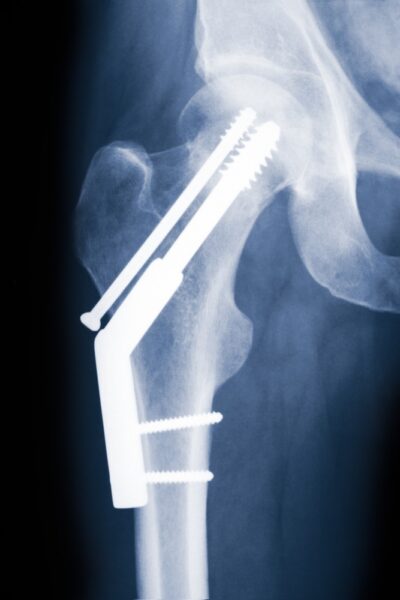
When you suffer injuries in a motorcycle accident, there are typically two types of damages you may face: economic damages (like medical costs and lost wages) and non-economic damages (like pain and suffering).
However, unlike economic damages, which can be demonstrated with a precise dollar amount, pain and suffering needs to be calculated differently for personal injury claims. We explain how to calculate pain and suffering after a motorcycle accident.
What Pain and Suffering Means in a Motorcycle Accident
“Pain and suffering” is the legal term for ways your injuries have impacted your life. It’s meant to account for physical pain as well as mental and emotional suffering. To claim pain and suffering damages, you must have suffered a bodily injury from the accident you suffered.
Examples of pain and suffering damages might include:
- Physical pain
- Scarring or disfigurement
- Fear or worry
- Embarrassment
- Insomnia
- Loss of enjoyment of life
- Mental anguish
- Anxiety and depression from your accident
- Sleep issues
Most motorcycle accident cases have the potential to recover some damages for pain and suffering. However, since there is no set dollar amount for things like worry or insomnia, you and your lawyer will need to calculate what these damages are worth.
A personal injury claim is meant to “make you whole again” as much as possible, and money is the only way the legal system knows to make up for your suffering. While money can’t erase what’s happened because of the accident, we find it helps our clients cover their expenses and move on.
Get the strong arm
Why Calculating Pain and Suffering Is Different from Economic Damages
There isn’t one set formula for calculating pain and suffering damages. If you have these damages, you’ll want to work with a motorcycle accident lawyer who can help you estimate how much they are worth. Then, you’ll know what to seek as a settlement in your motorcycle accident claim.
Calculating economic damages is very straightforward as you simply need to account for all your bills, receipts, invoices, and estimated future expenses related to your accident. But how do you put a price on something abstract like mental anguish or physical pain? To do so, our lawyers primarily use two different formulas.
Two Methods for Calculating Pain and Suffering in a Motorcycle Accident Case
How do you go about actually calculating what your pain and suffering damages are worth? Your lawyer will need to think a bit like an insurance adjuster when considering your pain and suffering. It’s not a simple process.
Although lawyers might use two common methods to calculate these types of damages, the insurance company might use its own methods and argue for them. Therefore, your lawyer will need to consider both common methods and know why they’re better to make you whole than the methods the insurance company uses.
The two methods are the “multiplier” and the “per diem” methods.
The Multiplier Method for Pain and Suffering
Through this method, your economic damages are totaled and multiplied by a number that’s usually somewhere between 1.5 and five. This number is higher or lower based on the severity and pain level of your injuries. The number that you’d get by multiplying would be the value of pain and suffering damages.
For example, if your motorcycle accident left you with $10,000 in economic damages and your injuries were assigned a multiplier of three, multiplying the economic damages by three would total $30,000 in pain and suffering.
The Per Diem Method for Pain and Suffering
The second method, the per diem option, assigns a certain amount of money to each day between the day of the motorcycle accident and the day you reach maximum medical recovery.
Again, the severity of the injuries would help determine what the daily per diem should be.
The per diem method uses the amount of income you made before your accident each day as a basis figure. This makes it harder to use, especially for long-term injuries. The multiplier method is often better for clients, but not always.
It’s important to note that insurance companies usually use a computer program to calculate pain and suffering damages for a motorcycle accident victim. The program might factor in your injuries plus the type of treatment you received. Insurance companies do not have to follow one of the two methods mentioned above to calculate pain and suffering damages.
Insurance companies will also look at details of your treatment, like how long you received it and what type of doctor you saw. If they feel like your treatment details don’t match up with your injuries, they will try to reduce what they have to pay you as compensation. This is why it’s so important to have a motorcycle accident lawyer’s help early on in your case.
How to Prove Pain and Suffering After a Motorcycle Accident
If you did not cause your motorcycle accident, you have a right to seek compensation for your damages under the Official Code of Georgia Annotated (OCGA) § 51-1-6. However, to actually be able to recover pain and suffering damages, you’ll need to prove these damages as best you can. The more evidence you can provide to support your claim, the better.
You can prove damages like your medical costs and lost wages with documentation like medical bills and pay stubs, but that’s not the case with pain and suffering. You and your lawyer will need to compile evidence of how the accident has impacted you. Examples of helpful evidence might be:
- Personal journals or notes expressing how you were feeling physically and emotionally after the accident
- Proof of mental health treatment for mental health issues like depression, anxiety, or post-traumatic stress disorder (PTSD) you experienced because of your accident and injuries
- Documentation from family members or friends about how your injuries have affected your daily life
Your motorcycle accident lawyer will know the best types of information to compile to support your claim for pain and suffering damages. They will also calculate how much they’re worth so that you know the value of your claim as you deal with the insurance company.
Writing a Good Personal Journal for Pain and Suffering
When you’re making a personal journal to document your pain and suffering, there are some important things to keep in mind:
- Mark the date and the time of each entry clearly.
- Be honest about what you’re feeling, both physically and emotionally. Don’t exaggerate or downplay what you’re experiencing.
- Write about the day-to-day challenges you’re suffering because of your accident. Is it harder to do daily activities? How about work?
- You can also write about second-order effects. For example, if your injury won’t let you work, you can write about how you’re running out of money.
- Write about any doctor’s visits and how your treatment and recovery are progressing.
Writing your journal this way makes your experience clear and puts it into a timeline. Your motorcycle lawyer may have additional advice on what you need to record.
Don’t Let the Insurance Companies Win
Insurance companies are notorious for downplaying the amount of pain and suffering you’ve been through, especially after a motorcycle accident. So, before you accept any settlement offer or speak to any insurance adjuster, it’s best to get legal representation first. Insurance companies aren’t on your side and will do anything they can to get you to settle for less.
Remember, the general statute of limitations to file a claim for a motorcycle accident is two years under OCGA § 9-3-33. This doesn’t give you a lot of time to act. Don’t wait to file your claim and start calculating your damages. Allow us to provide you with the assistance you need today.
Other Non-Economic Damages
Other non-economic damages, like loss of a limb or loss of consortium, are calculated similarly, though there may be specific laws about how much compensation you can get for them. If your case qualifies for additional non-economic damages, your lawyer can discuss the details.
Talk to a Motorcycle Accident Lawyer for Free Today
Pain and suffering damages are not easy to calculate or prove, but an experienced lawyer can help you every step of the way. At John Foy & Associates, that’s what we’re here for. We can help you build a strong claim after your motorcycle accident and seek the compensation you deserve. Call us or contact us online to schedule your free, no-risk consultation today.
(404) 400-4000 or complete a Free Case Evaluation form



